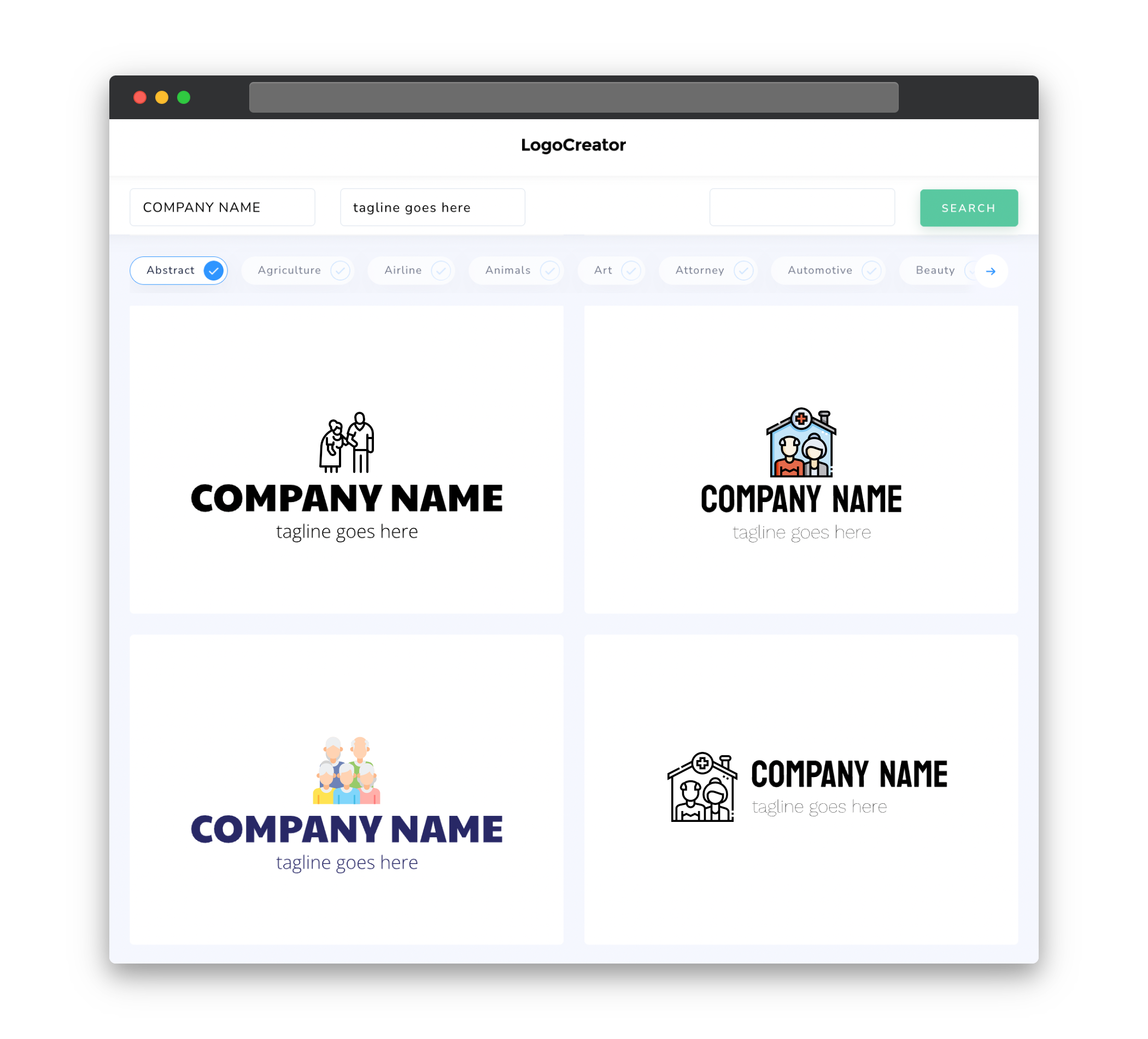Audience
When designing a logo for a nursing home, it is essential to consider the target audience. The primary audience for a nursing home logo consists of elderly individuals who may require long-term care or assistance with their daily activities. These individuals often face various health challenges and may have specific needs. Therefore, the logo should reflect a sense of compassion, comfort, and trustworthiness, creating a welcoming atmosphere for potential residents and their families. Incorporating symbols of care, such as hands, hearts, or embracing figures, can effectively communicate the caring and supportive environment that a nursing home provides.
Icons
Icons play a crucial role in representing the values and services offered by a nursing home. Using the right icons can help visually communicate the essence of the nursing home and establish an emotional connection with potential residents and their families. Some common icons that are often associated with nursing homes include a home symbol to convey a sense of familiarity and warmth, a cross symbol to represent healthcare services, or a tree symbol to signify growth, stability, and renewal. The carefully chosen icons should align with the nursing home’s brand identity and evoke positive emotions in the viewer.
Color
Selecting the right color palette is essential in designing a nursing home logo. Colors have the power to evoke emotions and create a sense of tranquility and comfort. Soft and soothing colors, such as blues, greens, or pastel shades, are commonly used in nursing home logos to promote a sense of relaxation and serenity. These colors can also symbolize trust, stability, and well-being. It is important to strike a balance between using colors that appeal to the target audience while also reflecting the professionalism and expertise of the nursing home.
Fonts
The choice of fonts in a nursing home logo should reflect the overall tone and character of the nursing home. Care should be taken to ensure that the fonts are easily readable for individuals with varying visual abilities. Sans-serif fonts are often preferred for their simplicity and legibility, which can be particularly important for older adults. Additionally, incorporating handwritten or script fonts can add a personal touch and convey a sense of warmth and friendliness. The fonts selected should complement the overall design of the logo and align with the nursing home’s brand personality.
Layout
The layout of a nursing home logo should be clean, balanced, and visually appealing. A balanced layout ensures that elements within the logo are arranged in a harmonious and organized manner. It is important to consider the hierarchy of elements within the logo, placing the most important elements, such as the name of the nursing home or key icons, in a prominent position. The logo should be designed to be easily scalable and adaptable for various applications, whether it’s a small business card or a large signage. Striking the right balance between simplicity and visual impact will create a memorable and effective nursing home logo.
Usage
Once you have designed a compelling nursing home logo, it is essential to consider its usage across various platforms and applications. The logo should be versatile enough to be used on different mediums, such as websites, signage, printed materials, and social media profiles. It is important to ensure that the logo retains its visual impact and readability regardless of its size or color restrictions. Creating variations of the logo, such as a simplified version or a monochrome version, can ensure flexibility and adaptability in different scenarios. Additionally, the logo should be accompanied by clear guidelines on how it should be used, including size requirements, spacing, and color specifications, to maintain consistency and professionalism across all platforms.



